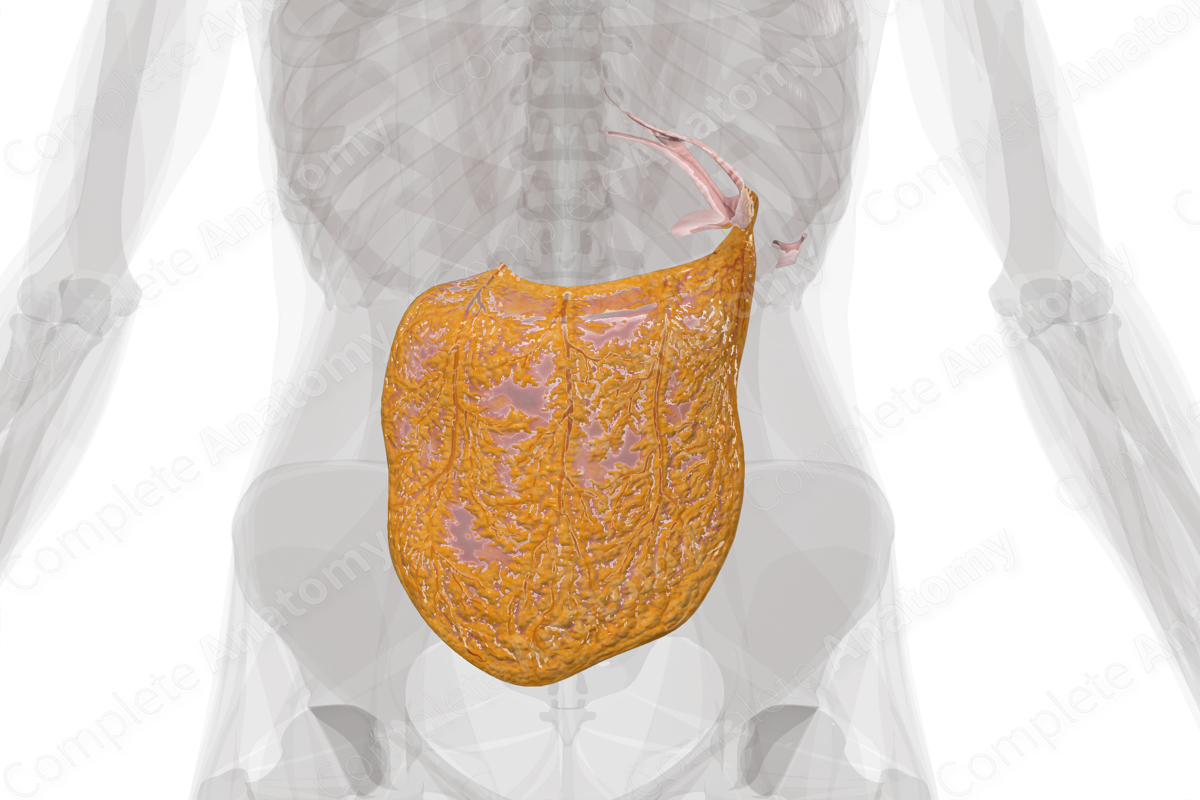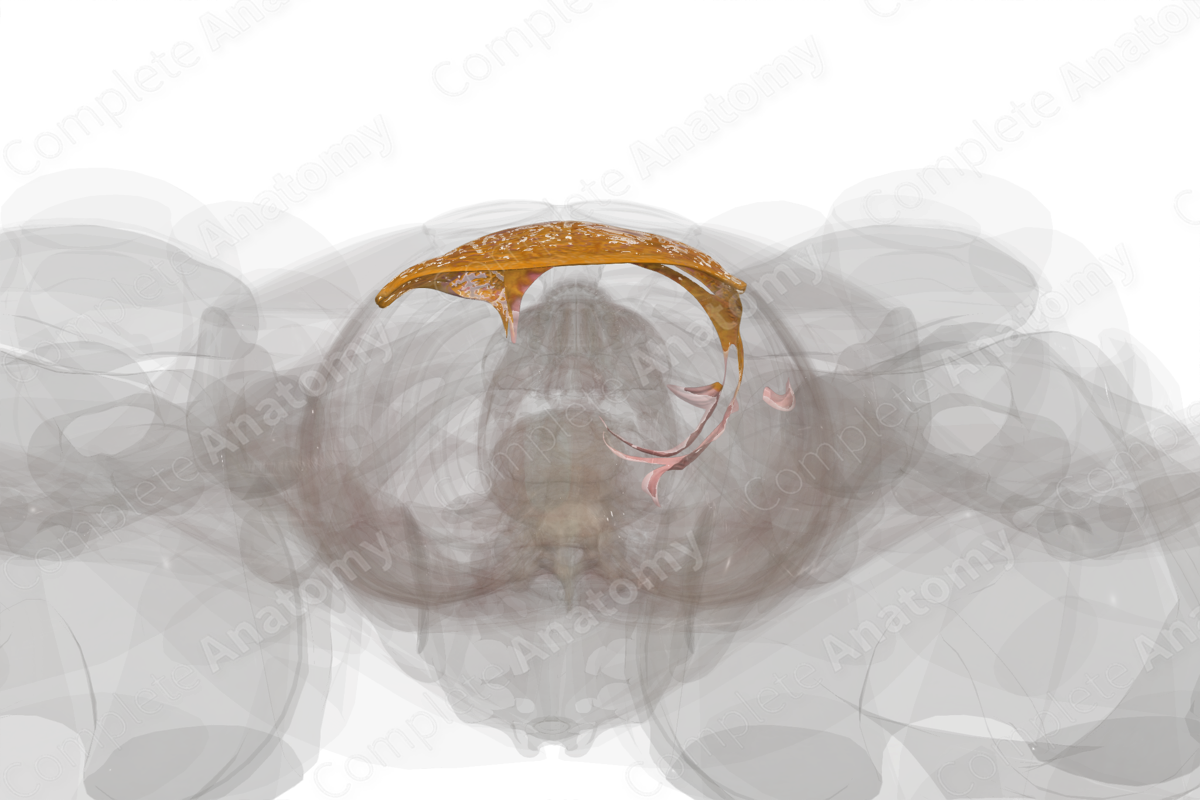
Structure
The greater omentum consists of adipose (fat) tissue and other loose connective tissue. This is the largest mesentery tissue by length and width.
Anatomical Relations
The greater omentum is composed of the omental apron and several ligaments, including:
- gastrocolic ligament;
- gastrophrenic ligament;
- gastrosplenic ligament;
- phrenicocolic ligament;
- phrenicosplenic ligament;
- pancreaticocolic ligament;
- pancreaticosplenic ligament;
- splenocolic ligament;
- splenorenal ligament.
The omental apron is unique compared to other mesenteries as it consists of four layers since this sheet of tissue folds under itself. It’s also the mesentery that occupies the most anterior portion of the peritoneal cavity, which is why it’s typically the first tissue to be identified in open abdominal surgeries. This apron attaches the greater curvature of the stomach to the transverse colon.
Function
The greater omentum has two main functions:
- reabsorption of the peritoneal fluid;
- a high concentration of macrophages and other lymphoid tissue within the greater omentum illustrates its importance for destroying pathogens and the ability to quickly launch an immune response in the peritoneal cavity if necessary.
Learn more about this topic from other Elsevier products
Greater Omentum

Called the greater omentum, peritoneum or mesentery, it refers to the fascia of the abdominal cavity.




